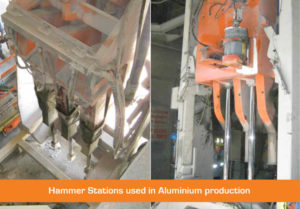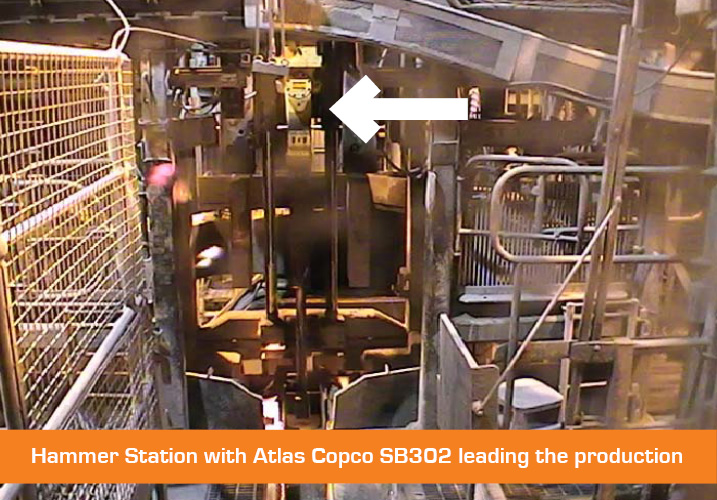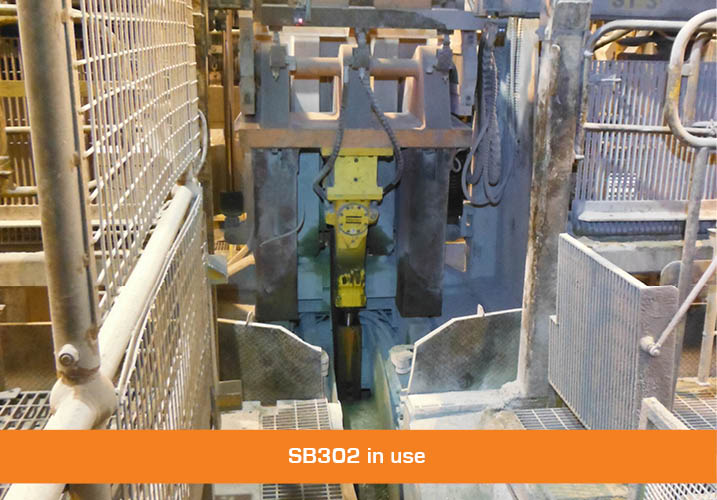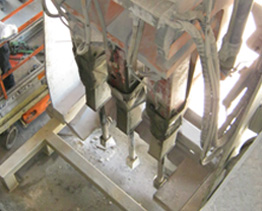Case Study: Boyne Smelters
The team at BAEG worked with Graham Tombling, Carbon Maintenance Technical at Pacific Aluminium to provide a technical analysis of this sites hammer station installation and recommendations on how to maximise the hammer operation and how to drastically reduce spare parts costs, servicing costs and downtime. In the following case study Graham explains a 6-year-old problem his site had been grappling with and what has changed since BAEG provided site services, product selection advice, quality products and the outcome 9 months after installation.

BAEG helped us solve a problem which was costing Australia’s largest aluminium producer.
Boyne smelters produces around 500,000-600,000 tons of aluminium a year at a very high grade and quality. The quality of our aluminium and the cleanliness of our process depends heavily on the machines doing the work to separate all the various products. When the anodes are in the cell they are ‘Buried’ in bath which melts into a liquid around the anode and provide the medium for turning alumina dust into aluminium. Any bath (sodium) in the anode destabilises the process and reduces the quality of the aluminium product, the machine that separates the bath from the spent anode is critical to the process of delivering the highest quality aluminium.
The machine which separates the bath (catalyst/electrolysis medium) from the spent carbon anodes is the HBCF (Hot Butt Cleaning facility). This machine has 2 main stations which are custom designed to remove the crystallised bath from the spent anodes. The first station removes 75% of the bath is called the hammer station.
It used to originally have 3 X Thyssen Krupp HM305 hammers which were reasonably successful operating 135kg tools. However, this model of hammer is no longer produced so we had a team of people come up with a solution and the solution was to install an alternate brand of hammer.
The other brand of hammer was a NIGHTMARE. We 
The breakdowns did reduce though not by much, only down to $110,000 per year and this was due to hammer design. The design of a floating hammer in an outer shell and combined with a 135kg tool was destroying the hammers. The tool could not be replaced or redesigned to significantly reduce weight due to the machine design so a hammer better designed to deal with the weight was needed.
I researched the hammers available on the market and drew up a chart detailing the pro’s and cons of each hammer including the original HM 305. One hammer stood clear above the others which was an SB302 by Atlas Copco. I contacted BAEG and asked for design specs, operating
specifications and information about the dry fire hammer cushion—this was a 
Over the next year BAEG continued to work with us and provide information and support during our assessment process. At the same time the more I heard the keener I was on trialing one hammer to do all the work of our existing three hammers.
We eventually bit the bullet, bought 2 X SB302’s, changed our inventory and stores items, had new tools made and rebuilt the spare module to have an SB302 in the middle of the hammer station (middle position does the most work).
The hammer was installed in April/May 2016 and has operated flawlessly since then. The change in tool design and hammer model has seen the projected cost of repairs alone save $110k/ year. The spares reduction, and upgrade of the spare module has saved a further $165,000 already and the hammer is still operating like it was new.
BAEG have supported us through this entire process over several years and now in 2017 we have a machine that we barely have to touch, thanks to the highly-experienced personnel at BAEG and the Atlas Copco SB302 hammers.


 Youtube
Youtube LinkedIn
LinkedIn Facebook
Facebook Instagram
Instagram